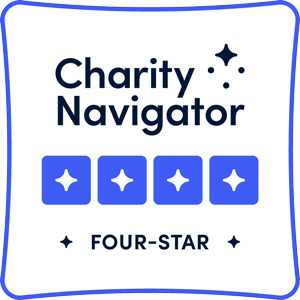In life, no two people are dealt the same hand. Everyone has a unique set of circumstances, struggles and opportunities that they must manage as they move through the world. Some people will face far fewer difficulties than others, and some will face a sea of troubles blocking their path to stability.
No matter what life throws at us, however, we all deserve to be happy. The American Dream declares that we should all have a fair shot at a good life. Those who were born into difficult circumstances or fall on hard times need the chance to overcome.
The American Safety Net was created to help those who are trying to build a better life. It is a collection of government programs developed over the past century designed to support those in need. Some of the most prominent programs include:
- Supplemental Nutrition Assistance Program (SNAP): Supports the food budget of families in poverty.
- Temporary Assistance for Needy Families (TANF): Often referred to as welfare, TANF offers financial support to families with children.
- Public or Subsidized Housing: Affordable housing for those at or below 50 percent of their area’s median income.
- Child Care and Development Fund (CCDF): Offers low-income families help paying for child care.
While these are some of the most commonly used programs, the safety net system is vast and varied across state governments and cities. Nearly one in five Americans utilize at least one safety net program, and almost one-third of all children in the United States receive assistance (The Urban Institute).
People across the country are reaching out for help, and the need is so large that these programs should be as effective and efficient as possible. The point of the American Safety Net was intended to give people a boost out of poverty. And it makes sense to have this broad safety net—no one can overcome life’s greatest challenges alone. However, if the American Safety Net’s aim is to help permanently get people out of poverty and into prosperity, we think it may have lost its way.
The current structure of our government assistance programs makes the safety net a cycle of dependency rather than a foundation for growth. These programs are backfiring and keeping people stuck in poverty because they make people dependent on them. We believe there is a way to create an American Safety Net that launches families into better lives, but we must overhaul our approach.
Let’s walk through a few problems with the current safety net and potential solutions we are working to promote:
1. There’s No Unified Goal
We refer to the American Safety Net as a unit of programs all working to end poverty, but that isn’t exactly true. The safety net is a bunch of disjointed, unrelated government programs that each address a specific need with no clear, unified objective.
In 2019, the U.S. government spent $361 billion on these programs—they should have a goal. Right now, they put Band-Aids over poverty, but our safety net programs should be unified with the intention of getting people out of poverty for good.
“Imagine a public safety net that is designed and operated with the intention of growing those it serves beyond their need for those services,” said Clarence Carter, former head of the Office of Family Assistance in an article for the Washington Examiner.
By bringing clarity and organization to the American Safety Net, programs can better suit themselves to boost people into better lives rather than simply keep them dependent on assistance.
2. It’s Too Easy to Become Dependent
At Solutions for Change, we believe dependency is the enemy of stability. Dependency on anything—substances, unhealthy relationships, financial assistance—hinders people from escaping The Churn and finding freedom. We work with our Solutions Academy students to help them overcome their dependencies so they can build healthier lives.
Unfortunately, the system of government assistance programs currently lends itself to dependency. When temporary housing runs out, people are right back where they started and they must go back to the government for help. When TANF runs out and it hasn’t changed a family’s situation, they have to ask for more assistance. It was never meant to get people stuck in a cycle of poverty and handouts, but that is what’s happening.
Programs like Solutions for Change champion independence and give people the tools to stop relying on government support. We educate individuals about how to use financial support as a springboard. If our safety net programs invested more in this kind of education, dependency would decrease.
3. The Safety Net Does Not Invest in Solving Root Causes
The biggest problem with the American Safety Net is that it does not sufficiently address the root causes of poverty and homelessness. It offers temporary fixes to financial and housing insecurity, but poverty is a symptom of deeper personal and societal difficulties.
People are not in poverty simply because they are in poverty. They may be facing substance use issues, abuse, chronic unemployment, mental illness or a lack of education. All of these factors are root causes that must be solved in order to overcome poverty.
The best safety net is one that helps people survive the tough times while preparing them to build something better. We need to invest in rehabilitation for substance use, financial literacy, employment training, emotional development, parenting classes and more forward-thinking solutions that heal the causes of poverty. Solutions for Change provides all of these services and launches people back into society where they become successful, independent citizens.
We’ll never be free from the weight of poverty until our system starts asking what causes poverty and then invests in real solutions. Solutions for Change is paving a revolutionary new path forward as an example of what a beneficial safety net could be. We want individuals and families to leave poverty in their past, and we’ll help them along the way. Join our fight to change the way we address poverty at solutionsforchange.org/jointhefight.


